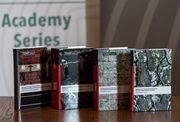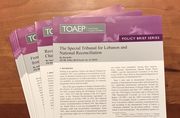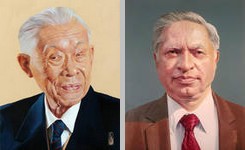Table of contents:
5. The perpetrator inflicted severe physical or mental pain or suffering upon one or more persons.
5.1. Infliction of physical or mental pain or suffering
5.1.1. Evidence of the bodily harm
5.1.2. Evidence of confinement under inhumane conditions
5.1.4. Evidence of civilians being used as human shields
5.1.5. Evidence of conduct related to torture
Element:
5. The perpetrator inflicted severe physical or mental pain or suffering upon one or more persons.
5.1.I nfliction of physical or mental pain or suffering
The Trial Chamber in Mucić et al. ("Čelebići") stated:
"In light of the foregoing, the Trial Chamber finds that cruel treatment constitutes an intentional act or omission, that is an act which, judged objectively, is deliberate and not accidental, which cause serious mental or physical suffering or injury or constitutes a serious attack on human dignity. As such, it carries an equivalent meaning and therefore the same residual function for the purposes of common article 3 of the Statute, as inhuman treatment does in relation to grave breaches of the Geneva Conventions. Accordingly, the offence of torture under common article 3 of the Geneva Conventions is also included within the concept of cruel treatment. Treatment that does not meet the purposive requirement for the offence of torture in common article 3, constitutes cruel treatment."[1]
In Orić the Trial Chamber stated that:
"Regarding the actus reus of cruel treatment, the seriousness of the harm or injury must be assessed on a case-by-case basis, taking into account such factors as the severity of the alleged conduct, the nature of the act or omission, the context in which the conduct occurred, its duration and/or repetition, its physical and mental effects on the victim, and in some instances, the personal circumstances of the victim, including age, gender and health. The case-law of this Tribunal has found the following conduct to constitute cruel treatment, inhumane treatment or inhumane acts: beatings, inhumane living conditions in a detention centre, attempted murder, use of human shields and trench digging."[2]
Specifically, the Mrkšić et al. Trial Chamber held that:
"[T]he failure to provide adequate medicine or medical treatment would constitute the offence of "cruel treatment" if, in the specific circumstances, it causes serious mental or physical suffering or injury, or constitutes a serious attack on human dignity and if it is carried out with the requisite mens rea."[3]
The Trial Chamber in Hadžihasanović and Kubura concluded:
"Their testimony is consistent in stating that the detainees were repeatedly subjected to the most terrible brutality, sometimes in front of other detainees, that the detainees were forced to beat one another and to frequently shout "Allah-u-akbar", and that they were brutalised with objects ranging from wooden sticks, to clubs, to rifle butts, if not with punches or kicks."[4]
Prosecutor v. Jadranko Prlić, Case No. IT-04-74-T, Judgement (TC), 29 May 2013, paras. 148-150:
"148. Thus, the Chamber finds that the physical conditions of detention may be enough to constitute the offence of cruel treatment when they cause detainees great physical and/or mental suffering, constituting a serious attack on their human dignity, and are imposed deliberately."
"149. The Appeals Chamber, moreover, has found that although resorting to forced labour is not always unlawful: “the use of persons taking no active part in hostilities to prepare military fortifications for use in operations and against the forces with whom those persons identify or sympathise is a serious attack on human dignity and causes serious mental (and depending on the circumstances physical) suffering or injury”. It found that “[a]ny order to compel protected persons to dig trenches or to prepare other forms of military installations, in particular when such persons are ordered to do so against their own forces in an armed conflict, constitutes cruel treatment”."
"150. The Appeals Chamber has furthermore established that using prisoners of war or civilian detainees as human shields, that is, the use of a protected person such that, by his very presence, certain points or areas are shielded from military operations is prohibited under Article 23 of the Third Geneva Convention, Articles 28 and 83 of the Fourth Geneva Convention, and Article 51 of Additional Protocol I and that it may constitute cruel treatment under the provisions of Article 3 of the Statute when the other constituent elements of this crime have been met."
5.1.1. Evidence of the bodily harm
The Hadžihasanović and Kubura Trial Chamber found:
"All the Prosecution witnesses are consistent in stating that, throughout their detention in the Music School, they repeatedly underwent cruel treatment and lived in a permanent state of anxiety. Thus, upon their arrival at the School, the detainees were almost systematically kicked and beaten with rubber cable and wooden shovel handles by the soldiers and guards of the School before they were taken to the basement cell. Witness XA recounts that upon his arrival he was hit on the head with a wooden stick when he was climbing the stairs and lost consciousness; when he came to, 15 to 20 7th Brigade soldiers were questioning him while continuing to hit him about the head, on the back and in the stomach, causing him to pass again out. He states that he was subjected to that treatment every day for eight days. The beatings caused him to sustain two fractures of the skull. Another witness recounts that after having lost and regained consciousness several times in the same circumstances, he was forced by a Muslim soldier to eat a military insignia after being threatened with having a rubber cable thrust down his throat if he did not do so.
"Witness Kruno Rajić explained that at night the detainees were brought upstairs one by one and, with the lights out, had to pass through the middle of a column of soldiers in two rows who struck them with wooden shovel handles. The soldiers would say to them 'We are going to teach you to sing', which meant that they would listen while the detainees screamed while being hit with the shovel handles. Another witness related that from the basement cell he could hear detainees cry out begging them to stop, and that when they returned downstairs they would be covered with bruises and blood. There is evidence that soldiers and guards played loud music in order to cover up the screams and cries of detainees being beaten."[5]
According to the Trial Chamber in Ntagerura et al.,
"The Chamber has found that soldiers under Imanishimwe's effective control and partly in his presence mistreated seven refugees in their custody upon arresting them near Cyangugu Cathedral on 11 April 1994. The mistreatment included the soldiers kicking the detainees and beating them, including with the butts of their rifles."[6]
As an occurence of cruel treatment, the Taylor Trial Chamber stated:
"The Trial Chamber is satisfied beyond reasonable doubt that, by the act of carving the letters "RUF" and "AFRC" into the bodies of an unknown number of their captive civilians some time between April and November 1998, RUF and AFRC fighters caused, and intended to cause, serious physical injury and suffering upon their victims."[7]
5.1.2. Evidence of confinement under inhumane conditions
The Hadžihasanović and Kubura Trial Chamber stated:
"Article 5(1) of Additional Protocol II to the Geneva Conventions may assist in establishing the seriousness of the conditions of detention. That article obliges parties to the Additional Protocol II to respect certain minimum conditions of detention with regard to persons deprived of their liberty for reasons related to an armed conflict. It provides inter alia that persons deprived of their liberty shall be provided with the same basic needs as the local population: 'In addition to the provisions of Article 4 the following provisions shall be respected as a minimum with regard to persons deprived of their liberty for reasons related to the armed conflict, whether they are interned or detained: [T]he persons referred to in this paragraph shall, to the same extent as the local civilian population, be provided with food and drinking water and be afforded safeguards as regards health and hygiene and protection against the rigours of the climate and the dangers of the armed conflict;' In that regard, the type of subsistence given to the guards of people deprived of their liberty may serve as a measure to evaluate whether the minimum subsistence conditions are being respected.
In the case where these minimum standards of treatment cannot be maintained, the detaining authority may not continue to detain those persons deprived of their liberty without possibly incurring criminal responsibility.
"The Prosecution bears the burden of proving that the conditions of detention were sufficiently bad to constitute cruel treatment of the prisoners within the meaning of Article 3 of the Statute. If, in his defence, the Accused argues that the local civilian population was affected by conditions similar to those of the prisoners, he must bring evidence to that effect. The Accused must therefore demonstrate that a food or drinking water shortage in the region where the detention centre was located equally affected the local civilian population as well as the prisoners of war and detained civilians."[8]
The Chamber also stated:
"[t]he Chamber has no doubt that the food given to the detainees was in any event insufficient. Moreover, the testimony leaves no doubt as to the small amount and therefore definite inadequacy of the space available for 10 to 15 detainees per cell and the degree of discomfort in which the detainees were forced to sleep. The detainees did not have blankets, beds or even mattresses on which to sleep, and there were too many detainees to allow them all to lie down. Furthermore, even though the testimony is inconsistent as to access to medical care at the Blacksmith Shop, the Chamber is not convinced by the efforts of the Defence for the Accused Hadžihasanović to show that the detainees at the Blacksmith Shop were properly cared for.[...] Lastly, the fact that the prisoners at the Blacksmith Shop were confined in a room without any light persuades the Chamber that the detainees were exposed to conditions such as clearly to violate their human dignity, punishable as cruel treatment."[9]
The Chamber precised:
"The Chamber recalls that persons deprived of their liberty for reasons related to an armed conflict must be provided the same level of basic necessities, such as potable water and food, as those provided to the local civilian population. Furthermore, persons deprived of their liberty for reasons related to an armed conflict must be afforded safeguards for their health and hygiene."[10]
In Simić et al. the Appeals Chamber found that:
"the detainees who were imprisoned in the detention centres in Bosanski Šamac were confined under inhumane conditions. The prisoners were subjected to humiliation and degradation, and they did not have sufficient space, food or water. In addition, they suffered from unhygienic conditions and did not have appropriate access to medical care. The detainees were subjected to these conditions because of their non-Serb ethnicity."[11]
In the Prlic and al. case, the Trial Chamber explained that:
"The Appeals Chamber has moreover considered that, while the use of forced labor was not always illegal
the use of persons not taking direct part in hostilities for the construction of military fortifications to be used against the forces with whom these people identify themselves or sympathize with, constitutes a serious attack upon human dignity and cause great mental sufferings or serious injuries to mental integrity and, depending on the situation, serious physical harm or serious injuries upon physical integrity.
"It concluded that '[a]ny order aiming at forcing protected persons to dig trenches or to prepare other military facilities, in particular against the forces to whom they belong in an armed conflict, amount to cruel treatment.'"[12]
"[A]s the Naletilić Chamber, the Chamber finds that it is within her discretion to determine in each case whether the works alleged in the indictment actually had a forced character. For this purpose, the Chamber will take into consideration the following criteria: a) the absence of remuneration for for the work performed; b) the situation of vulnerability of the detainees; c) the allegations that those detainees who were unable or unwilling to work were forced to do so or sent to dungeon; d) the long-term consequences of the work; e) the reality of detention and the conditions thereof; and f) the consequences of work on the prisoners' physical health. The perpetrator must have acted with the intent to bring the victim to perform prohibited works. This mens rea may be inferred from the circumstances under which the work was performed." "[13]
5.1.4. Evidence of civilians being used as human shields
According to the Trial Chamber in Blaskić
"On 20 April 1993, 247 detainees were in front of the Hotel Vitez, General Blaškić's headquarters in Vitez. Despite his presence in the building for a large part of the afternoon, the accused claime that he knew nothing of it. However, there were many HVO soldiers in and around the Hotel whose frontage was glass. One of the soldiers said to one of the detainees in front of the Hotel that he would go and tell the commander. Moreover, the officer responsible for operations under General Blaskić, Slavko Marin, implicitly admitted that the civilians from Ga~ice village were put in danger. Finally, the Trial Chamber recalls that on 20 April 1993 the ABiH set in motion an extremely threatening offensive of which General Blaskić was well aware. The Trial Chamber is therefore convinced beyond all reasonable doubt that on 20 April 1993 General Blaskić ordered civilians from Ga~ice village to be used as human shields in order to protect his headquarters."[14]
In the Prlic and al. case, the Trial Chamber held that:
"The Appeals Chamber has further established that the use of prisoners of war or civilians detainees as human shields, that is to say, using a protected person, by his presence, to save certain points or areas from military operations, [...] can constitute a cruel treatment under Article 3 of the Statute when the other elements of the crime are satisfied."[15]
5.1.5. Evidence of conduct related to torture
The Trial Chamber in Ntagerura et al. stated that:
"Considering the evidence on the record, including the fact that following their mistreatment, two of the victims were in a position to forcibly escape from detention, the Chamber concludes that the mistreatment was not such as to cause severe suffering or pain sufficient for a finding of torture."[16]
5.2. The severity/seriousness of the conduct
In Boškoski and Tarčulovski the Trial Chamber stated that:
"The beatings were so severe that some of the men lost consciousness. When one of them regained consciousness he discovered that he no longer had his trousers or underwear on. In the Chamber's finding these acts too are so serious as to constitute cruel treatment and manifestly were carried out with the requisite mens rea and in circumstances in which the victims were not taking an active part in hostilities."[17]
In Orić the Trial Chamber stated that:
"Regarding the actus reus of cruel treatment, the seriousness of the harm or injury must be assessed on a case-by-case basis, taking into account such factors as the severity of the alleged conduct, the nature of the act or omission, the context in which the conduct occurred, its duration and/or repetition, its physical and mental effects on the victim, and in some instances, the personal circumstances of the victim, including age, gender and health. The case-law of this Tribunal has found the following conduct to constitute cruel treatment, inhumane treatment or inhumane acts: beatings, inhumane living conditions in a detention centre, attempted murder, use of human shields and trench digging."[18]
The Trial Chamber in Martić stated that:
"It is not required that the suffering caused by the cruel treatment be "lasting". In its assessment of the seriousness of the act or omission, the Trial Chamber will take all circumstances into consideration, including factors such as the age and health of the victim, and the physical and mental effects of the crime upon the victim. Moreover, it is not required that the seriousness of the suffering or injury amounts to the level of seriousness required for torture."[19]
In the Lukić and Lukić case, the Trial Chamber held that:
"The actus reus of cruel treatment requires proof of an act or omission which caused serious mental or physical suffering or injury, or which constituted a serious attack on human dignity. The act or omission must be similar in gravity to the other offences listed under Article 3 of the Statute The suffering inflicted by the relevant act or omission upon the victim need not be longlasting, so long as it is real and serious. The seriousness of the act or omission in question is assessed on a case-by-case basis having regard to the factual circumstances of each instance. Such circumstances may include the nature of the relevant act or omission, the context in which it occurred, its duration and/or repetition, the physical, mental and moral effects on the victim and the personal particulars of the victim, such as age, gender and state of health."[20]
Footnotes:
[1] ICTY, Mucić et al. ("Čelebići")Trial Judgment, 16 November 1998, para. 552. ICTY, Jelisić Trial Judgment, 14 December 1999, para. 41; ICTY, Blaškić Trial Judgment, 3 March 2000, para. 186; ICTY, Krstić Trial Judgment, 2 August 2001, para. 516; ICTY, Kvočka Trial Judgment, 2 November 2001, para. 159; Confirmed in ICTY, Aleksovski Appeal Judgment, 24 March 2000, para. 26 and ICTY, Mucić et al. ("Čelebići") Appeal Judgment, 20 February 2001, para. 424, ICTY, Kordić Trial Judgment, 26 February 2001, para. 265 See also ICTY, Naletilić and Martinović ("Tuta and Štela") Trial Judgment, 31 March 2003, para. 246.
[2] ICTY, Orić Trial Judgment 30 June 2006 para. 352.
[3] ICTY, Mrkšić et al. Trial Judgment 27 September 2007 para. 517.
[4] ICTY, Hadžihasanović and Kubura Trial Judgment, 15 March 2006, para. 1513.
[5] ICTY, Hadžihasanović and Kubura Trial Judgment, 15 March 2006, paras. 1080-1081 (footnotes omitted).
[6] ICTR, Ntagerura et al. Trial Judgment 25 February 2004, para. 799.
[7] SCSL, Taylor Trial Judgment, 18 May 2012, para. 1228.
[8] ICTY, Hadžihasanović and Kubura Trial Judgment, 15 March 2006, paras. 35-37 (footnotes omitted) (empasis in the original).
[9] ICTY, Hadžihasanović and Kubura Trial Judgment, 15 March 2006, para. 1341.
[10] ICTY, Hadžihasanović and Kubura Trial Judgment, 15 March 2006, para. 1608.
[11] ICTY, Prosecutor v. Simić, Tadić and Zarić ("Bosanski Šamac"), "Appeals Judgment", IT-95-9-A, 28 November 2006 para. 121.
[12] ICTY, Prosecutor v. Prlić, "Judgment", IT-04-74-T (vol. 1), 19 May 2013, para. 149 [Unofficial translation].
[13] ICTY, Prosecutor v. Prlić, "Judgment", IT-04-74-T (vol. 1), 19 May 2013, para. 162 [Unofficial translation].
[14] ICTY, Blaškić Trial Judgment, 15 July 1999, paras 742, 743 and disposition.
[15] ICTY, Prosecutor v. Prlić, "Judgment", IT-04-74-T (vol. 1), 19 May 2013, para. 150 [Unofficial translation].
[16] ICTR, Ntagerura et al. Trial Judgment 25 February 2004, para. 800.
[17] ICTY, Boškoski and Tarčulovski Trial Judgment 10 July 2008, para 385.
[18] ICTY, Orić Trial Judgment 30 June 2006 para. 352.
[19] ICTY, Martić Trail Judgment 12 June 2007 para. 80.
[20] ICTY, Lukić and Lukić Trial Judgment , 20 July 2009, para.957.







